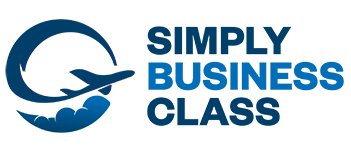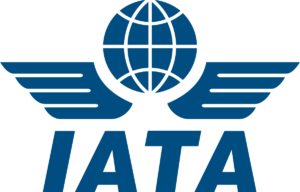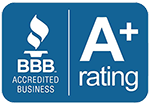Hong Kong International Airport is the commercial airport serving Hong Kong, built on reclaimed land on the island of Chek Lap Kok. The airport is also colloquially known as Chek Lap Kok Airport. The airport has been in commercial operation since 1998, replacing Kai Tak Airport. It is an important regional trans-shipment centre, passenger hub and gateway for destinations in Mainland China (with 45 destinations) and the rest of Asia.
Terminal 1 of the HKIA, is the third largest airport passenger terminal building in the world, after Dubai International Airport Term
inal 3 and Beijing Capital International Airport Terminal 3. At its opening, Terminal 1 was the la
rgest airport passenger terminal building. Terminal 2 is only a check-in and processing facility for departing passengers with no gates or arrival facilities (passengers are transported underground to gates at Terminal 1). So far most low-cost carriers and some full-service carriers have relocated their check-in operations to T2. The SkyPlaza is situated within Terminal 2.
The airport is the world’s busiest cargo gateway and one of the world’s busiest passenger airports. It is also home to one of the world’s largest passenger terminal buildings. The airport is operated by the Airport Authority Hong Kong 24 hours a day and is the primary hub for Cathay Pacific (the flag carrier of Hong Kong), Cathay Dragon, Hong Kong Airlines, Hong Kong Express Airways and Air Hong Kong (cargo carrier). The airport is one of the hubs of Oneworld alliance, and it is also one of the Asia-Pacific cargo hubs for UPS Airlines. It is a focus city for many airlines, including China Airlines and China Eastern Airlines. Singapore Airlines, Ethiopian Airlines and Air India utilise Hong Kong as a stopover point for their flights. HKIA is an important contributor to Hong Kong’s economy, with approximately 65,000 employees. More than 100 airlines operate flights from the airport to over 180 cities across the globe. In 2015, HKIA handled 68.5 million passengers, making it the 8th busiest airport worldwide by passenger traffic. Since 2010, it has also surpassed Memphis International Airport to become the world’s busiest airport by cargo traffic. The airport is managed and operated by the Airport Authority Hong Kong (AA), which was established on 1 December 1995.
Airport Code: HKG
Airport Addresses: 1 Sky Plaza Rd, Chek Lap Kok, Hong Kong
Main Airline: Cathay Pacific
Changi Airport is the major civilian airport for Singapore, and one of the largest transportation hubs in Southeast Asia. It is currently rated the World’s Best Airport by Skytrax, for the sixth consecutive year since 2013 and is one of the world’s busiest airports by international passenger and cargo traffic.
The airport is located in Changi, at the eastern end of Singapore, approximately 20 kilometres northeast from Marina Bay (Singapore’s Downtown Core), on a 13-square-kilometre (5.0 sq mi) site. It is operated by Changi Airport Group and it is the home base of Singapore Airlines, Singapore Airlines Cargo, SilkAir, Scoot, Jetstar Asia Airways and BOC Aviation.

Changi Airport has four main passenger terminals arranged in an elongated inverted ‘U’ shape. Currently, the airport has a designed total annual handling capacity of 85 million passengers.
• Terminal 1, opened in 1981, is located at the northern end.
• Terminal 2, opened on 22 November 1990, is located at the eastern end.
• Terminal 3, opened on 9 January 2008, is located at the western end.
• Terminal 4, opened on 31 October 2017, is located on the southern side, at the site of the former budget terminal.
There is also a privately run luxury terminal called the JetQuay CIP Terminal. It is similar to the Lufthansa First Class Terminal at Frankfurt Airport, but is open to all passengers travelling in all classes on all airlines with an access fee.
Airport Code: SIN
Airport Addresses: Airport Blvd, Singapore
Main Airline: Singapore Airlines
SimplyBusinessClass.com can save you up to 50% off your business class flights out of Singapore Changi Airport. Call now or submit our flight request form to receive a free quote.
John F. Kennedy International Airport colloquially referred to as Kennedy Airport, JFK Airport, New York-JFK, or simply JFK or Kennedy and is the primary international airport serving New York City. It is the busiest international air passenger gateway into North America, the 22nd-busiest airport in the world, the sixth-busiest airport in the United States, and the busiest airport in the New York airport system; it handled just over 59 million passengers in 2017. Over ninety airlines operate from the airport, with nonstop or direct flights to destinations in all six inhabited continents. JFK is located in the neighborhood of Jamaica in the New York City borough of Queens, 16 miles (30 km) southeast of Midtown Manhattan.

The airport features six passenger terminals and four runways. It serves as a hub for both American Airlines and Delta Air Lines, and it is the primary operating base for JetBlue Airways. JFK was also formerly a hub for Pan Am, TWA, Eastern, National, and Tower Air. Opened as New York International Airport in 1948, it was commonly known as Idlewild Airport before being renamed in 1963 as a tribute to John F. Kennedy, the 35th President of the United States, following his assassination.
 JFK has six terminals, containing 128 gates, numbered 1–8 but skipping terminals 3 and 6. The terminal buildings, with the exception of the former Tower Air terminal, are arranged in a deformed U-shaped wavy pattern around a central area containing parking, a power plant and other airport facilities. The terminals are connected by the AirTrain system and access roads. Directional signage throughout the terminals was designed by Paul Mijksenaar. A 2006 survey by J.D. Power and Associates in conjunction with Aviation Week found JFK ranked second in overall traveler satisfaction among large airports in the United States, behind McCarran International Airport, which serves the Las Vegas metropolitan area.
JFK has six terminals, containing 128 gates, numbered 1–8 but skipping terminals 3 and 6. The terminal buildings, with the exception of the former Tower Air terminal, are arranged in a deformed U-shaped wavy pattern around a central area containing parking, a power plant and other airport facilities. The terminals are connected by the AirTrain system and access roads. Directional signage throughout the terminals was designed by Paul Mijksenaar. A 2006 survey by J.D. Power and Associates in conjunction with Aviation Week found JFK ranked second in overall traveler satisfaction among large airports in the United States, behind McCarran International Airport, which serves the Las Vegas metropolitan area.
Until the early 1990s, each terminal was known by the primary airline that served it, except for Terminal 4, which was known as the International Arrivals Building. In the early 1990s, all of the terminals were given numbers except for the Tower Air terminal, which sat outside the Central Terminals area and was not numbered. Like in the other airports controlled by the Port Authority, terminals are sometimes managed and maintained by independent terminal operators. At JFK, all terminals are currently managed by airlines or consortiums of the airlines serving them, with the exception of the Schiphol Group-operated Terminal 4. All terminals except Terminal 2 can handle international arrivals that are not pre-cleared. Most inter-terminal connections require passengers to exit security, then walk, use a shuttle-bus or using the AirTrain JFK to get to the other terminal, then re-clear security.
Airport Code: JFK
Airport Addresses: Queens, NY 11430
Main Airline: United Airlines
SimplyBusinessClass.com can save you up to 50% off your business class flights out of New York John F. Kennedy International Airport. Call now or submit our flight request form to receive a free quote.

 Narita is the predominant international airport in Japan, handling around 50% of the country’s international passenger traffic and 60% of its international air cargo traffic. As of 2016, Narita was the second-busiest passenger airport in Japan (after Haneda Airport in Tokyo), and was the tenth-busiest air freight hub in the world.
Narita is the predominant international airport in Japan, handling around 50% of the country’s international passenger traffic and 60% of its international air cargo traffic. As of 2016, Narita was the second-busiest passenger airport in Japan (after Haneda Airport in Tokyo), and was the tenth-busiest air freight hub in the world.




